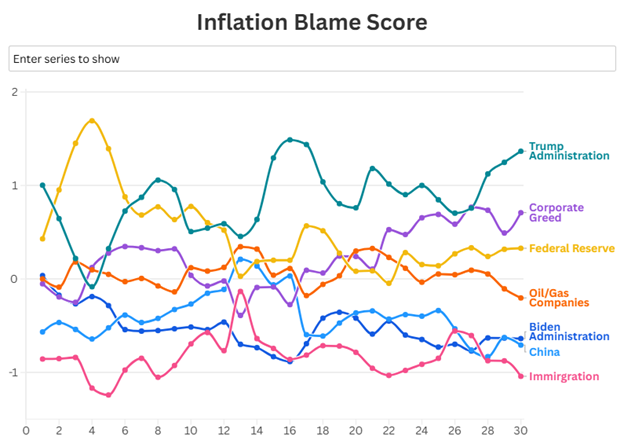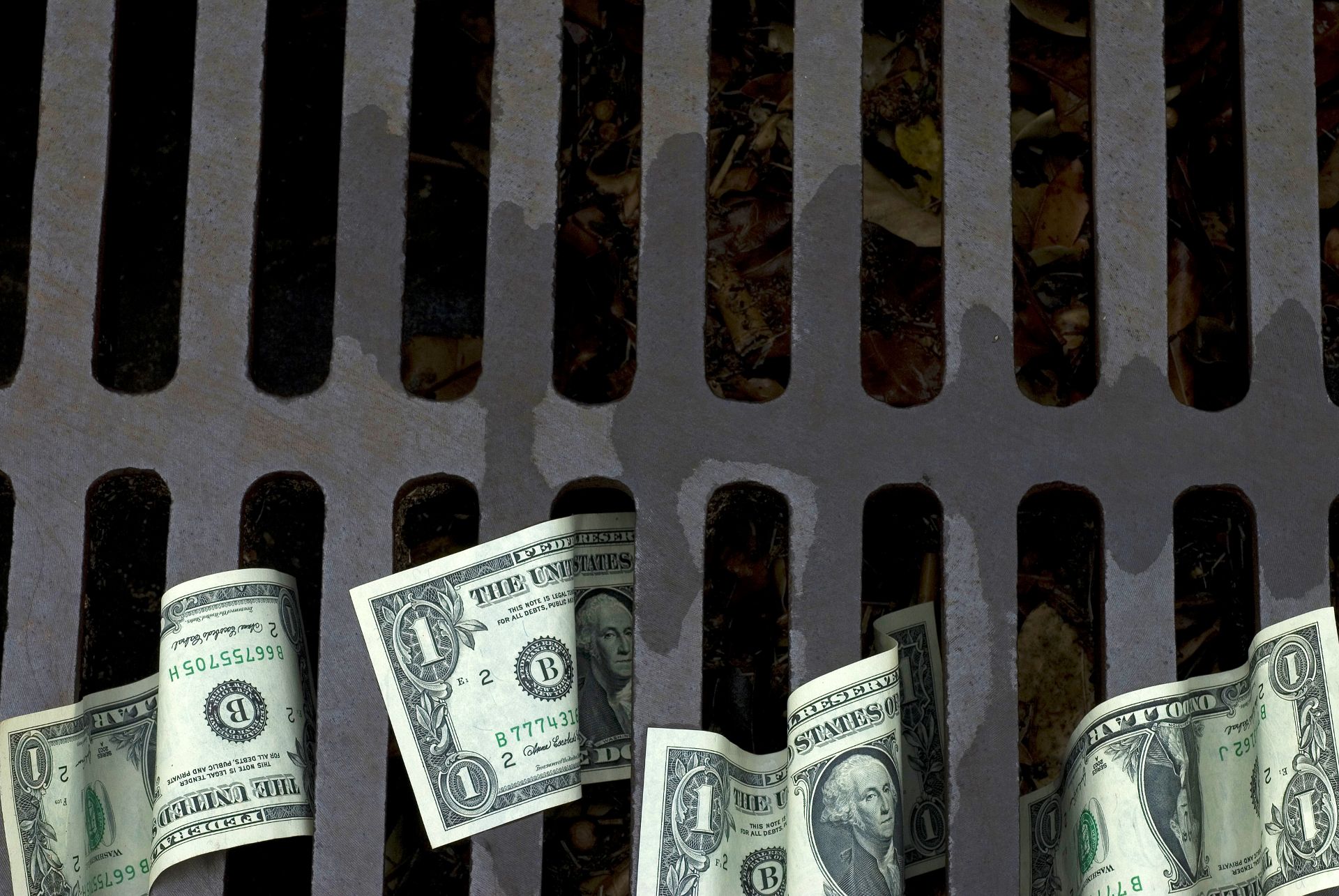Inflation Blame Shifts Sharply Toward Trump Administration

The release of the June inflation numbers on July 15 reignited headlines about rising prices — but the real shift came in who Americans hold responsible. PharosGraph’s weekly blame tracking shows the Trump administration climbing to its highest blame score yet, peaking at +2.27 in the weeks following the release. That surge widened the gap between the Trump administration and every other target, including corporations, the Federal Reserve and foreign actors. As inflation resurged, the Trump administration became the face of it.

At the same time, media coverage of categories most closely tied to everyday consumer pain points shifted. Energy and travel costs dominated inflation stories in June, reflecting the twin pinch of higher fuel prices and pricier summer vacations. These are tangible expenses households can’t easily avoid, and their prominence in coverage helps explain why frustration over inflation has remained high, even as broader price pressures have shown signs of moderating in earlier months.
Trump Administration: Owning the Inflation Narrative
By July, the Trump administration wasn’t just among several competing targets for inflation blame — it was firmly on top. The weeks after the June numbers showed the administration’s blame score rising to among the highest levels of his presidency, leaving little doubt that the media narrative has coalesced around Trump’s economic stewardship.
This marks an important shift from earlier in the year, when blame was more diffuse across multiple actors. Through the spring, the Federal Reserve, corporate America and even foreign countries like China all saw fluctuating shares of responsibility. But as prices accelerated again in June, coverage increasingly framed inflation as a problem linked most directly to the Trump administration.
The timing matters. Inflation was relatively stable through May, but the June uptick gave new momentum to coverage — and with it, blame. In other words, Trump didn’t suddenly emerge as a target; he was already on top in June, but the July data release cemented his role as the chief source of blame.
Corporate Greed: A Narrative That Sticks
As blame consolidates around the Trump administration, the president has worked to deflect responsibility toward institutions like the Federal Reserve (more on that later) and corporations.Unlike the Fed, that seed of blame seems to have taken root in corporate boardrooms. Corporate greed has firmly held its place as the second‑highest source of blame, and its score has even grown since June.
Media coverage has consistently highlighted companies accused of passing along costs or taking advantage of inflationary conditions to widen margins. This story line dovetails neatly with Trump’s own warnings to corporations not to pass on the costs of tariffs to consumers — a rare moment where his messaging seems to reinforce, rather than clash with, the broader blame narrative.
Adding fuel to the perception, Q2 earnings reports have largely come in positive, reinforcing consumer suspicions that corporations may be profiting from inflation rather than simply weathering it.Against a backdrop of rising costs in categories like energy and travel, these earnings headlines serve as tangible evidence for a public already inclined to assign blame to corporate America.
The Federal Reserve: An Attempted Deflection That Hasn’t Stuck
The Federal Reserve has long been in Trump’s rhetorical cross hairs, with Jerome Powell regularly singled out as a scapegoat. But the data suggest that this line of attack has not resonated nearly as strongly with the public narrative. The Fed’s blame score did inch upward in July, reaching 0.85, but that still leaves it far behind the administration and even behind corporate America.
This dynamic highlights an important contrast: while Trump has successfully shifted some of the conversation onto corporate greed, his attempts to pin inflation on the Fed remain less convincing. Monetary policy is simply a less tangible target for most Americans than corporate profits or the prices they see at the gas pump and airport.
Inflation Categories: What Consumers Actually Feel
Blame isn’t just abstract — it’s rooted in the categories where consumers feel inflation most directly. In both June and July, the top five categories of salience remained unchanged, underscoring that the pain points are remarkably consistent. But within that group, Travel & Leisure and Energy stood out as the fastest‑growing, reflecting a summer season marked by high gas prices and pricier vacations.
Other shifts were subtler but telling: Food costs held steady as a top‑tier concern,even as coverage plateaued; housing slipped slightly, suggesting the surge of attention earlier in the year has cooled; and healthcare edged upward,potentially boosted by June’s coverage of Medicare provisions in the so‑called Big Beautiful Bill.
These salience patterns mirror the broader narrative: Americans are most attuned to costs they encounter daily or seasonally — filling the tank, booking flights, buying groceries — and those categories, in turn, drive who they choose to blame.
The Takeaway
Inflation is more than a set of numbers —it’s a narrative battle over responsibility. The Trump administration now sits firmly at the center of that blame, its score dwarfing other actors. Corporate greed has gained as a secondary culprit, buoyed by strong earnings and consumer suspicion. The Fed, meanwhile, remains a background player despite Trump’s attacks.
Layered on top of this political blame game are the categories that keep inflation salient: travel, energy, healthcare,food and housing. When these costs rise, Americans notice immediately. And when they notice, they look for someone to hold accountable.





